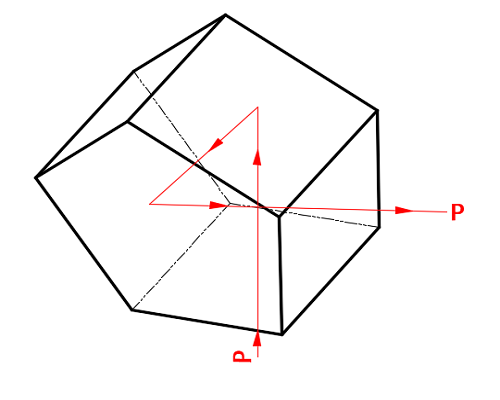Specifications:
| Material | BAK4, UVFS, N-BK7 or equivalent | Dimension Tolerance | ±0.2mm |
| Surface Quality | 60/40 S/D | Clear Aperture | >90% |
| Flatness | <λ/10@632.8nm | Wavelength Distortion | <λ/4@632.8nm |
| Deviation | 180°±10 arc seconds | Roof Angle Tolerance | <5 arc seconds |
| Chamfer | Sharp roof, other protective chamfered | Coating | None, Available |
The Porro Prism is a kind of reflection prism, that is designed to manipulate the orientation of the image. A single Porro prism resembles the shape of a right geometric prism with right-angled triangular end faces. Light entering the large rectangular face of a single Porro prism experiences twice TIR at the boundaries of air and the two slopes, and emerges from the base of the prism, with a rotation angle of 180°, exiting in the opposite direction offset from its entrance point.
A prevalent scheme to use Porro prisms is to use them as double porro prism pairs, comprising two porro prisms with their long sides faces assembled, but with a second prism rotated 90° relative to the first. Positioned such, the light will traverse both prisms. During the operation procedure, light enters one end of the prism and undergoes total internal reflection at the hypotenuse face of the first prism. It then hits the internal face of the second prism at a right angle, is reflected, and emerges from the prism, the net effect of such a prism pair is a beam parallel to its original direction but displaced from its initial location, with the image rotated 180°. The specific construction of Porro prisms allows them to fold optical paths, resulting in a reduction of the length of the instruments This kind of prism pair is often used in the field of optical telescopes, and binoculars to re-orient an inverted image (image erection).
Shanghai North Optics offers Custom Porro prisms made of BAK4, BK7, and UV fused silica, our Porro prisms find widespread usage in periscopes, telescopes, binoculars, and monoculars.
